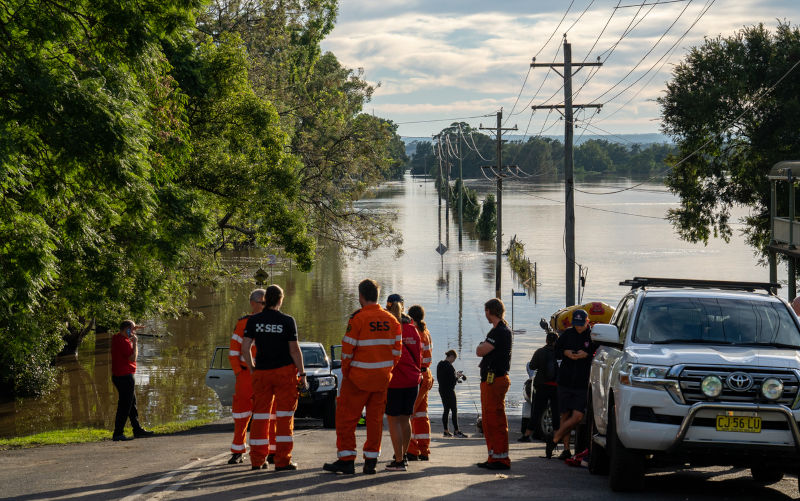Disaster management: The lessons of 2022
February 6, 2023
As we start a new year, it is a good time to reflect on the lessons of 2022 not just from the Covid pandemic but also the floods that wreaked havoc on communities all down the east coast of Australia.
That Australia needs to be better prepared for the next crisis is a key lesson from the Covid experience. The federal government spent more than $340 billionresponding to the pandemic - on direct financial support, health measures and much more to protect life and peoples livelihoods. The failure to prepare for a pandemic, despite years of warning from experts around the world, was astronomical.
Covid-19 was entirely foreseeable. In the past two decades alone, the world has experienced a range of respiratory pandemics and epidemics, including Sars (2002-4), the Avian Flu (2003), the Swine Flu (2009), the Middle East RS (2012), the Avian Flu (2013-19) and the Swine Flu (2015). Each could have been far more serious with a slight tweak of the virus. In addition, there have been numerous localised outbreaks of diseases and viruses including cholera, measles, dengue fever and Ebola.
The same lack of preparation applies to natural disasters. Between 2009 and 2012, federal, state and local governments in Australia spent 50 times more on cleaning up ($11 billion) than on prevention/mitigation and resilience programs (just $225 million).
In 2015, the Productivity Commissions Natural Disaster Funding Arrangementsreport identified that Australian Government mitigation spending was only 3 per cent of what it spent post-disaster in recent years. Some 97% of federal disaster money was spent on cleaning up, not prevention.
Governments have tended to adopt a reactive approach to the many risks that society faces. However, it is an extremely costly approach, in terms of lives lost and financially.
So what should we do? The first strategy is investing more in mitigation and preparedness.
The government has already begun changes in this area, with Minister for Emergency Management Murray Watt announcing the establishment of the National Emergency Management Agency (NEMA). Previously Australias disaster response and recovery were kept separate.
NEMA will bring together Emergency Management Australia and the National Recovery and Resilience Agency into a single agency, to better coordinate the response to emergencies and help communities prepare for hazards.
The Albanese government has also legislated up to $1 billion over five years to the national Disaster Ready Fund, whose main purpose is to mitigate the risk of damage and loss caused by natural disasters.
Investment in disaster risk reduction could potentially combat the rising cost of insurance and the resulting problem of underinsurance. If peoples homes have a lower risk of flooding, for example, home insuranceproviders could offer more affordable premiums.
We also need to increase our investment in modelling. The economic benefits of reducing uncertainty in modelling are significant. A recent study estimated a net present value benefit of about US$10 trillion for the global economy if the level of uncertainty around the climates response to higher carbon levels could be halved.
Third, governance matters, which is why the Albanese government is committed to establishing a Centre for Disease Control. We are the only OECD country without one.
Now facing a $1 trillion debt, Australia simply cannot afford not to hedge its bets when it comes to society-wide risks.
While Covid has been a powerful reminder of the importance of risk mitigation, it has also been a powerful reminder of the importance of a strong welfare state. We all relied on vaccines, testing, a strong public hospital system, well-trained doctors and nurses and allied professionals. Countless lives were saved.
In responding to the floods, the Albanese government immediately pitched in with support payments to help get communities back on their feet, and released millions of dollars from the Emergency Response Fund for levee assessments and improvements; flood warning infrastructure; and risk management reports among other things.
The fact is that risk mitigation and a strong welfare state are inextricably linked. Risk mitigation, which is integral to insurance schemes, has long played a key role in the welfare state. In many Western countries, the welfare state grew out of insurance schemes of the late 1880s and early 1900s.
The two largest programs of government spending by far are on health and the retirement income system. Given that spending on the welfare state now comprises more than 50% of all government spending, it is important that we refocus on risk mitigation, as this will deliver better outcomes for all Australians, but particularly our most vulnerable. It will also have a far greater impact on the federal budget.
Dr Daniel Mulino is the federal Labor MP for Fraser. Dr Mulinos book Safety Net: The Future of Welfare in Australia is published by Black Inc in conjunction with La Trobe University Press.
